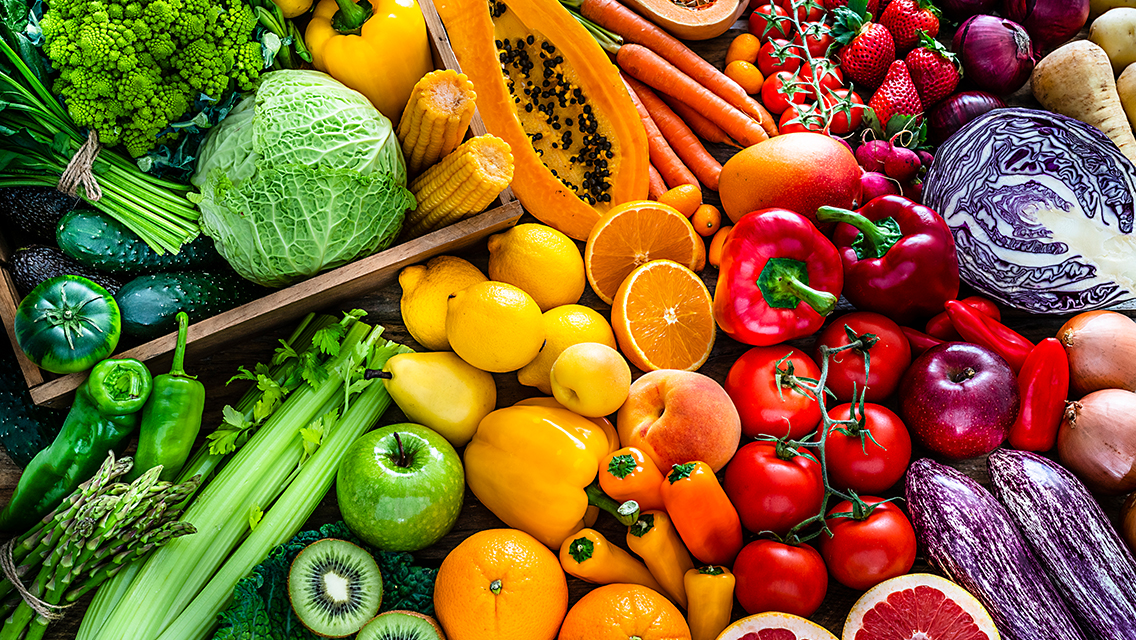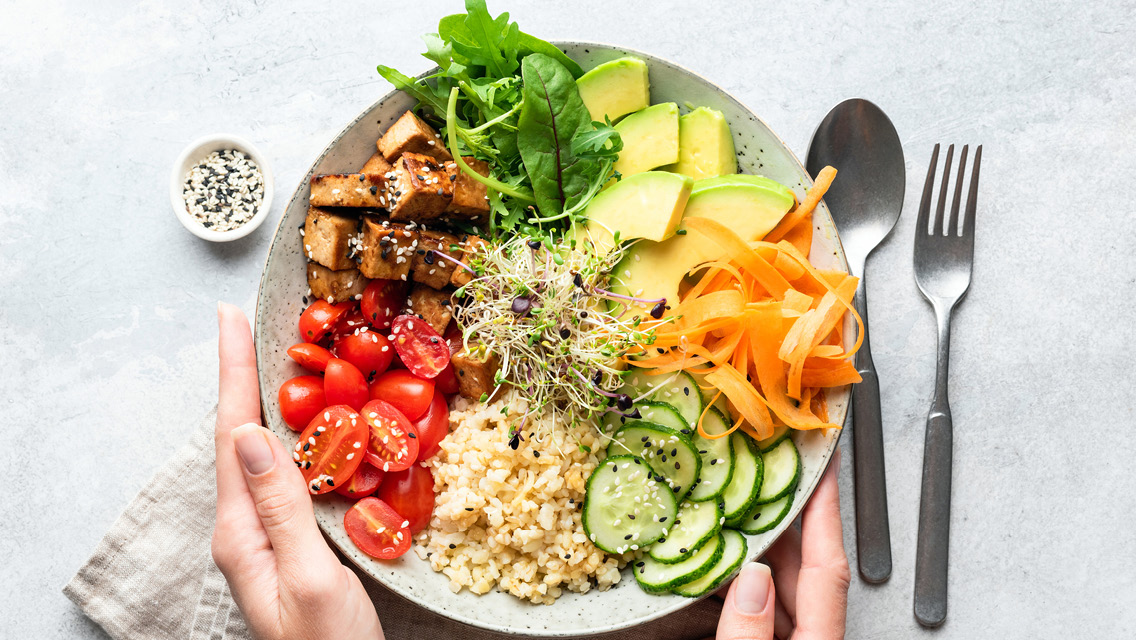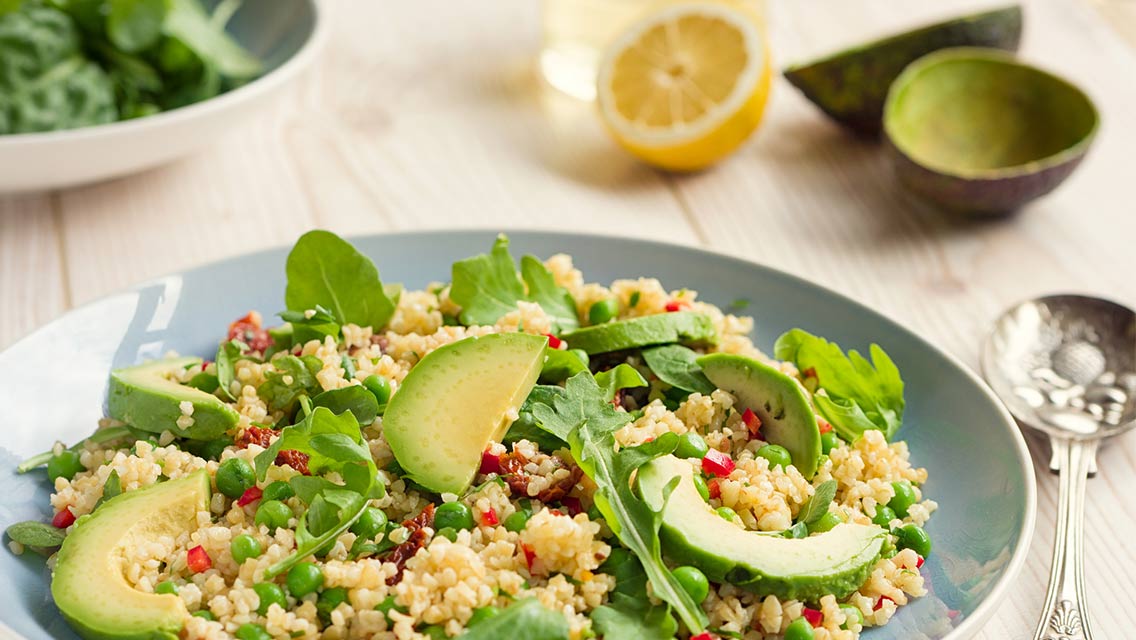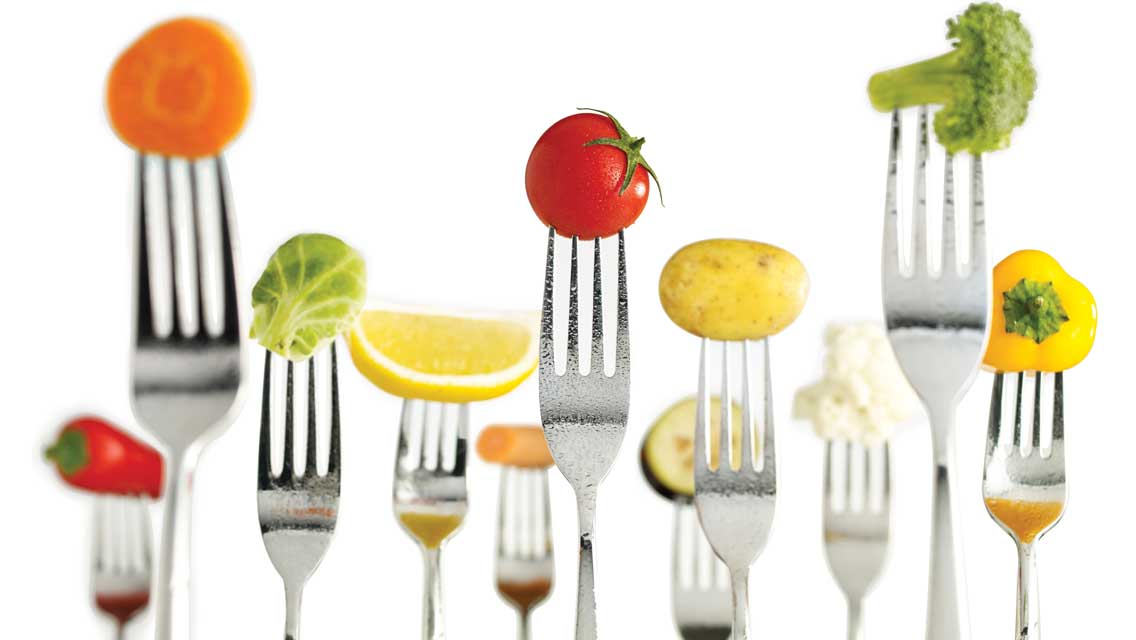Many of us are well aware of macronutrients, such as carbohydrates, protein and fat, as well as micronutrients, such as the vitamins and minerals that are listed on FDA-regulated food labels. But too few of us are familiar with phytochemicals (a.k.a. phytonutrients) — plant-based micronutrients that offer many health benefits and may help ward off chronic diseases, such as cancer, diabetes, heart disease and stroke.
It’s a time-tested truth: Plant-based foods, such as fruits, vegetables, legumes, whole grains, nuts and seeds, are good for you. But researchers recently have discovered that plant molecules connect with human cells in striking ways. In other words, we’ve known they were good for you — just not this good.
“I don’t think there’s been this much excitement since vitamins and minerals were discovered more than 100 years ago,” says Beverly Clevidence, PhD, the research leader at the USDA-funded Food Components and Health Laboratory in Beltsville, Md.
The discoveries — partly because of the work of the Human Genome Project — are revolutionizing the way we think about food.
In the past 20 years, for example, researchers have discovered that carrots, kale and peanuts are not just plant tissues embedded with vitamins and minerals that are easily encapsulated in multivitamins. Rather, these plant tissues are made up of tens of thousands of phytochemicals (“phyto” is from the Greek phuton, meaning plant).
You’ve probably heard of a few phytochemicals without even knowing what they are. For example, lycopene is a powerful phytonutrient found in tomatoes that helps fight heart disease and a variety of cancers. And the phenols found in strawberries protect against cancer and autoimmune diseases, and help reverse nerve-cell aging. But there are tens of thousands of other phytochemicals about which most of us know nothing. Experts in the nutrition field are buzzing about these chemicals with tongue-twisting names like glucoraphanin, zeaxanthin and saponin.
“This is an epic time,” says Jeffrey Bland, PhD, president of MetaProteomics, a nutrition research facility in Gig Harbor, Wash. “Some of the discoveries we’ve made since 2000 are so profound that the textbook companies can’t keep up with the information. There are brand-new nutrition textbooks out there that aren’t slightly wrong about phytonutrients, they’re totally wrong.”
Nutrients Beyond Number
When scientists first discovered these mysterious chemicals in the early 1950s, they thought they had found new classes of vitamins. Some were even given names, such as “vitamin P” and “vitamin U.” But on the whole, these chemicals were largely ignored.
“We made the assumption that these tens of thousands of molecules were not useful,” says Bland. “They were considered to be flotsam and jetsam. They were refined out of shelf-stable foods with no worry, because they weren’t ‘essential’ nutrients.”
Technically, those early food manufacturers were right. Phytonutrients are “quasi-nutrients” or “conditionally essential,” meaning that their absence in the body does not cause beriberi, rickets or some other type of deficiency disease. Many nutritionists now believe, however, that a phytonutrient deficiency can lead to conditions much worse than mere scurvy — think chronic diseases such as cancer and diabetes.
As our understanding of these chemicals has increased, so has their number.
The original “vitamin P,” for example, is now known as flavonoids — a phytonutrient subclass that includes more than 4,000 chemicals. And the list continues to grow. In addition to the tens of thousands of phytonutrients, Bland says, there are an undetermined number of classes and subclasses.
“It’s so hard to put a number on it,” he explains. “It’s a constantly changing playing field. One day phytochemists think they’ve got it all worked out, and then suddenly they find a whole new family that previously was not recognized.”
The simple hop plant, for example, has more than 1,000 phytonutrients.
Golden Ticket to Great Health
As the number of known phytochemicals has multiplied, so has the positive research. Scientists have discovered limonoids that detoxify the liver, phytosterols that block the growth of tumors, isoflavones that help destroy uterine cancer cells and polyphenols that restore lagging immune systems.
These chemicals repair and nourish the body in various ways. The phenols found in black and red berries, grapes, and eggplant, for example, discourage the development of cancer by blocking the conversion of precursor molecules into carcinogens. Saponins, found in foods such as alfalfa and legumes, inhibit the growth of cancer cells by interfering with their DNA. And flavonoids, found in citrus fruits, red wine and dark chocolate, inhibit a chemical called estrogen synthase, an enzyme that binds estrogen to the receptors in several organs and that can lead to breast and uterine cancers.
It starts with the same process: Intercellular transduction. That’s a mouthful, but essentially it means that phytonutrients convey information in the body. During the conversion from plant chemical to human-body booster, a phytonutrient will bind to the receptor sites on individual cells. The cell receives a message via a series of enzymes, which then trigger the genes to express specific patterns.
For example, sulforaphane, a phytonutrient found in cruciferous vegetables like broccoli, cauliflower and bok choy, helps to boost the body’s detoxification enzymes, which helps us to clear out potentially carcinogenic substances.
Why Food Is Your Best Source
Eating a diet steeped in fruits, veggies, legumes and other plant-based foods (see “From Allicin to Zeaxanthin: The Phytonutrient Superstars”) is the best way to ensure you’re getting all the phytonutrients your body needs. While there are a growing number of phytonutrient supplements available, many experts warn consumers away from that option.
The big cautionary tale here is beta-carotene. In 1995, it was considered the ultimate panacea. “There was so much good research on beta-carotene,” says David Williams, PhD, a researcher at the Linus Pauling Institute at Oregon State University in Corvallis. “We were charting nice correlations between beta-carotene in the blood and lower cancer risk. Basically everybody just assumed that beta-carotene was chemo-protective.”
But to the shock of many in the scientific community, two major clinical trials in 1996 indicated that beta-carotene supplements were not only useless against cancer, but actually increased the risk of cancer in smokers.
“That was one of the first big disappointments, and it made people rethink the idea of going after individual phytochemicals,” says Williams.
Mark Farnham, PhD, a plant geneticist who specializes in phytonutrient research at a USDA facility in Charleston, S.C., concurs that current scientific consensus is now leaning toward emphasizing whole foods, rather than supplements, because plant chemicals seem to interact with one another in powerful ways. “There seems to be a synergistic effect between the chemicals in food,” he explains, noting also that this synergy is very hard to study because plant-based whole foods contain so many different bioactive compounds that it would be almost impossible to separate and study the potential health benefits of individual phytochemicals.
Plus, each chemical seems to have its own quirks. The carote-noids in collard greens, sweet potatoes and tomatoes, for example, are best absorbed if they are chopped, puréed or cooked, and eaten with a little fat, such as olive oil. But the glucosinolates found in cruciferous vegetables are most effective when eaten in their raw state and thoroughly chewed, so the plant cell walls release more of the cancer-fighting chemical. “There’s really no useful rule, because they’re all unique,” says Clevidence.
So eat as many fruits, veggies and other plant-based foods as you can, and be sure to choose foods from all around the color wheel — from ripe red tomatoes to princely eggplant to vivid oranges.
“If on a daily basis you incorporate at least seven different colors, you are much more likely to get a wide variety of these nutrients that are healing, that prevent degenerative disease, and that will go to work on every ? tissue, cell and organ of the body,” says nutritionist Ann Louise Gittleman, PhD, coauthor of The Fat Flush Plan.
And don’t be afraid to go exotic with your color choices. Unusually hued foods add intrigue to your plate, and researchers at Washington State University have found that those foods can yield health benefits as well. Their 2006 study showed that wildly colored spuds contained more phytonutrients than white-fleshed potatoes.
If you need more motivation to eat your veggies, start a vegetable plot, and then chow down on the fruits of your labor. A 1991 study published in the Journal of Nutrition Education found that vegetable gardeners ate significantly more eggplant, sweet and hot peppers, summer squashes, tomatoes, and herbs than did nongardeners.
It’s also a smart idea to avoid pesticide- and herbicide-drenched produce by going organic. Last year, Bland completed a survey of some 50 organics-related research reports and found that the vast majority of organic produce supported higher levels of phytonutrients.
If vegetables don’t usually appeal to you, consider taking just one vegetable-centered cooking class. It might make all the difference, according to a 2005 study in the Journal of Nutrition Education and Behavior. After all, what sounds better: Brussels sprouts, or roasted Brussels sprouts with pine nuts and marjoram?
Ultimately, if your strategy for good health has been limited to popping vitamins, consider what you’re missing: a smorgasbord of beneficial phytonutrients found in wonderful, whole, plant-based foods. Besides, real food has been through the most extensive laboratory experiment ever conducted — natural selection. There’s nothing that’s been proven to nourish our bodies quite so well.




This Post Has 0 Comments